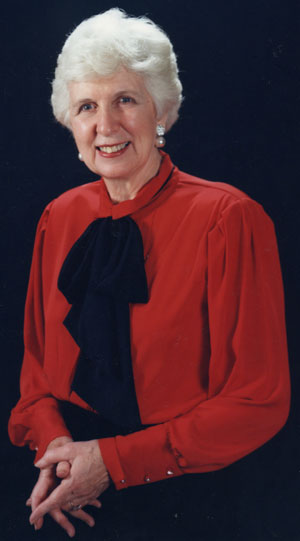By Brian Smyth


A plaque was unveiled on 3 April 2023 in Creeslough, Co. Donegal, to commemorate the pioneering computer programmer Kay McNulty. It was unveiled by her granddaughter, Naomi Most, who travelled from the United States for the event. Naomi remembered her grandmother as a determined, dynamic and brilliant woman who thought in a different way from other people (‘2+10 instead of 12’), and she credited her with inventing the subroutine, a segment of a computer program that is required in several parts.
The National Committee for Commemorative Plaques in Science and Technology together with Women in Technology and Science (WITS) commissioned the plaque and worked with a local committee in Donegal under the chairmanship of Eamonn McFadden to bring the project to fruition.
Kathleen (Kay) McNulty was born in 1921 near Creeslough. Her father was a stonemason and also an active member of the IRA. The night that Kay was born he was arrested and subsequently imprisoned for two years. On his release, he took his wife and six children to Philadelphia, where he established a masonry business. Kay’s first language was Irish and throughout her life she said her prayers in Irish. She was very good at mathematics at school and took a degree in the subject at Philadelphia’s Chestnut Hill College for women in 1942, graduating at a time when few women took degrees in mathematics. She did not want to go into teaching, so she took a series of business courses. This was wartime America, when men were in the armed forces and women were being considered for employment in engineering and science.
The US Army’s Ballistics Research Laboratory in Maryland were looking for women to work for them to calculate trajectories for shells and bullets necessary for the war effort and Kay got a job with them, working in the Moore School of Electrical Engineering. The work was complex. Soon after starting work at the Moore School, the women were given access to a calculating machine called a differential analyser. While the analyser was driven by an electric motor, it was still an analogue machine with moving parts, rotating gears and shafts. It was able to calculate a trajectory in 45 minutes, a lot more quickly than by hand.
Nevertheless, the military required still more speed. J. Presper Eckert and John Mauchly at the Moore School designed the world’s first working digital computer—the ENIAC (Electronic Numerical Integrator and Computer) was born. The machine was constructed in secret. It was very large, consisting of 18,000 vacuum tubes and 300 switches, and had to be programmed by hand. Punch cards were used to submit data. McNulty was one of six women assigned to work on ENIAC.
There was no manual and the women working on it had to study how ENIAC worked and how to programme it. McNulty worked on ENIAC until 1948, when she married John Mauchly, its co-inventor. By this time he and Eckert were running their own computer company, UNIVAC. At this time Kay finished full-time work in order to raise her seven children, but she continued to work on computer programming. John Mauchly died in 1980 and in 1985 Kay married the photographer Severo Antonelli, of the Italian Futurist School. He died in 1996.
In 1997 she was inducted into the Women in Technology Hall of Fame. She participated in a documentary film on ENIAC programmers in 1998 called The Computers. Letterkenny Institute of Technology established an annual prize in her honour for the best student in computer science, the Kay McNulty Medal and Prize. In 2016 Dublin City University renamed their computer science building in her honour.
Kay McNulty died of cancer on 20 April 2006. Her work was significant in that she helped to invent the field of computer programming, using flowcharts, logical block diagrams and techniques for debugging programs.
Brian Smyth is chair of the National Committee for Commemorative Plaques in Science and Technology.
